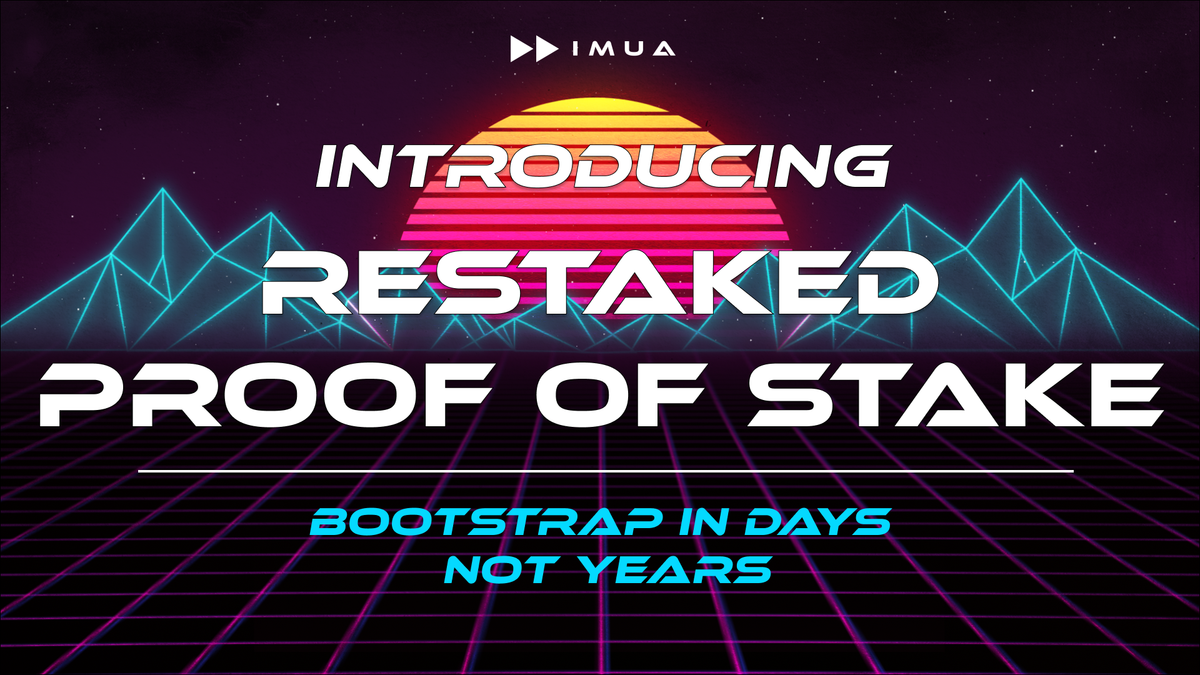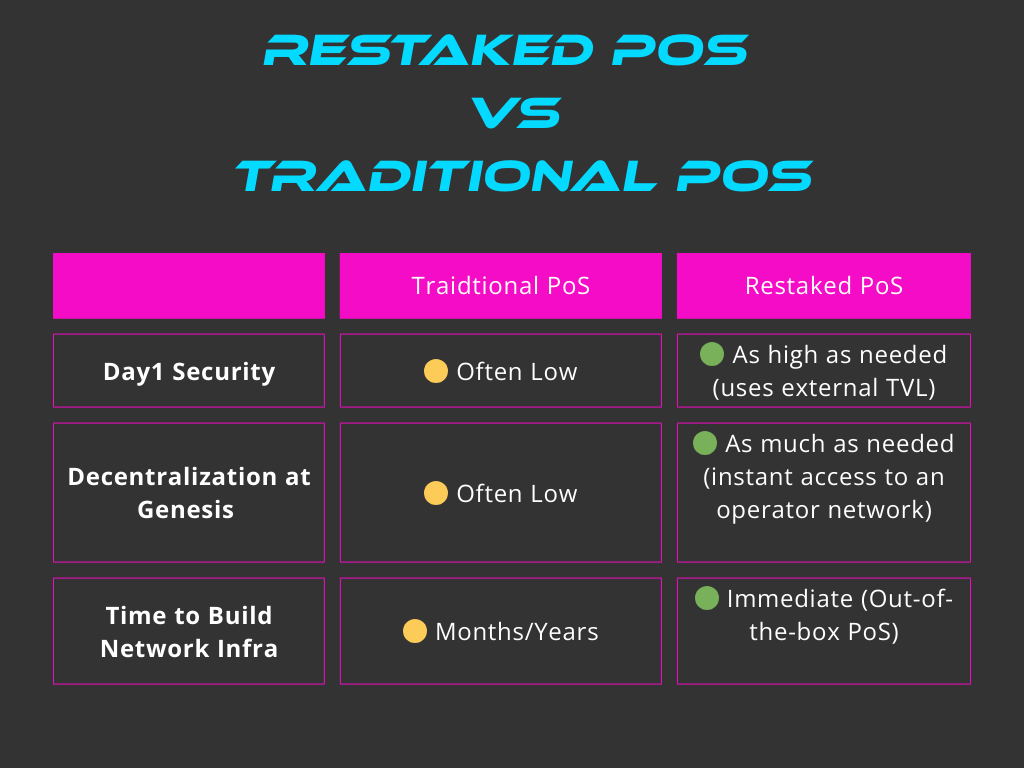Introducing Restaked-Proof-of-Stake (rPOS)

After Imua, the days of painfully bootstrapping an L1 PoS blockchain network are in the rearview mirror. Use top tokens to bootstrap in days, not years.
The Bootstrap Paradox
Every new network faces the same fundamental challenge: bootstrapping economic security from scratch.
It's a complex puzzle that takes most teams 18+ months and millions in runway capital to solve: PoS networks need validators to secure the network, but validators need tokens to have value. To have value, tokens need users who create demand, but users tend to trust high market cap networks with active applications.
The traditional process is painful, expensive, and distracting from a builder's core mission. Teams face immense pressure to maintain artificially high valuations just to justify their security budget. The need for immediate security often leads to high FDV/low float launches, not because teams want this, but because security and trust demands it. Meanwhile, teams burn through resources recruiting validators and building basic PoS infrastructure.
Basically, they're forced to focus on token-market-fit before they've found product-market-fit.
It's not just L1s facing this challenge. Bridges, oracles, DEXs, and other protocols struggle with the same burden, letting security budgets distract from their actual service.
But what if networks could launch with high economic security without placing the entire burden of that security solely on their native token? What if instead of building a network from nothing, you could leverage the security that already exists in top chains, like Bitcoin, Ethereum, Solana, the XRP Ledger, and others?
Introducing rPoS: A New Playbook for Network Initialization with Augmented Security
That's exactly what restaked Proof-of-Stake (rPoS) enables. It's a technique that allows networks to launch with immediate economic security while sustainably growing their own security budgets.
Using Imua's rPoS technique, any builder can secure their PoS network using top native tokens such as BTC, ETH, XRP, and SOL (tokens from other chains will be continuously added). Here's how it works:
- Users deposit native tokens with real value into a bootstrap contract
- These tokens get pre-staked with validators
- When the tokens reach a threshold amount, the network can initialize
The result is augmented security. New projects aren’t completely dependent on their native token but can be supplementally secured by top chains from the start without over-inflating their market cap too early. It’s a more decentralized and transparent way to coordinate users and operators for blockchain network initialization

Once launched, certain networks can operate exclusively using restaked assets for security, giving teams the freedom to introduce a native token if and when it makes strategic sense – not because security demands it on day one.
The philosophical shift matters just as much as the technical one: networks can be decentralized from the outset, with all backers transparently visible on-chain. Everything happens where it can be verified.
Dogfooding RPoS
Why did Imua create RPoS? Because we needed it ourselves.
Imua is a purpose-built L1 for verifiable compute powered by omnichain shared security. The L1 acts as an accounting layer for restaking actions across crypto, a big responsibility that makes Imua an attractive target. We needed a high level of economic security at launch without the burden of maintaining an artificially inflated token price.
That's when we realized we were building the solution we needed. Imua will use its own restaking technology to initialize its network, becoming the first AVS (Actively Verified Service) bootstrapped by Imua itself and its 50 genesis validators. Using RPoS to initialize Imua also allows us to dogfood our own product and prove our confidence: if RPoS doesn't work, Imua doesn't launch.
We’ve open-sourced RPoS for any team to use because we believe it’s a huge leap forward that will help other teams successfully get to market.
What This Means for Builders
RPoS fundamentally changes the economics of launching a PoS network. Teams can now:
- Launch with the security they need: instead of inflating your token, borrow the security you need from top chains
- Focus on product before token: Work on token-market-fit after finding product-market-fit
- Ship in weeks, not years: Skip the validator recruitment circus entirely
This is especially critical for high-value services, like bridges, oracles, and AI networks that are all tempting targets for manipulation or attack. Any network can augment its security using existing assets. Users simply restake supported tokens on Imua, and those assets provide the same security role as native staking.
RPoS means that any network or service can go to market with the security it needs from day one, giving it a huge advantage over teams taking the slower, traditional route.
Transparency by Design
RPoS makes transparent launches inevitable, not optional. The architecture itself demands openness – validator registration is permissionless, pre-staking amounts are visible, and threshold requirements are public. The community sees exactly how the network is being secured, who's securing it, and when it will launch.
This level of transparency enables builders to demonstrate to investors, users, and partners exactly where their security originates.
Ready to build with Imua and RPoS?
The name "Imua" means "to move forward" in Hawaiian. King Kamehameha used it as a battle cry when uniting the Hawaiian islands under shared security. We're using it to unite fragmented blockchain security under a shared protocol.
The days of painfully bootstrapping a PoS network for more than a year are over. RPoS offers a much easier, transparent way to launch a service, moving timelines from years to a matter of weeks. Achieve true security without the traditional burdens.
If you're a builder ready to launch with unsurmountable economic security from day one, apply to build with Imua or schedule a meeting with our team.
If you want to be part of this transformation - as a validator, staker, or community member - join our Discord to learn more and get involved.
It's time to move forward.
